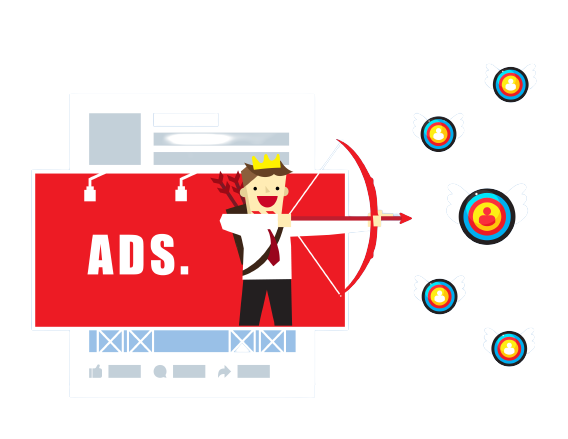 ActiveCampaign has undoubtedly established itself as a popular and powerful marketing automation platform, offering a range of features to streamline campaigns and engage audiences. However, in a world of diverse needs and rapidly advancing technology, exploring alternatives to ActiveCampaign has become a strategic imperative for many.
ActiveCampaign has undoubtedly established itself as a popular and powerful marketing automation platform, offering a range of features to streamline campaigns and engage audiences. However, in a world of diverse needs and rapidly advancing technology, exploring alternatives to ActiveCampaign has become a strategic imperative for many.
The concept of seeking alternatives doesn’t arise from dissatisfaction with ActiveCampaign itself; rather, it stems from the recognition that each business’s marketing requirements are unique. What works exceptionally well for one organization might not align perfectly with the goals and objectives of another. This realization underscores the need for a strategic approach to selecting the most suitable marketing automation solution.
Emphasizing the Importance of a Strategic Approach

The decision to find the best ActiveCampaign alternatives should never be taken lightly or hastily. It demands careful consideration, analysis, and a clear understanding of your business’s marketing landscape. This is where the strategic approach comes into play.
Selecting ActiveCampaign alternatives isn’t about a mere replacement—it’s about optimizing and aligning your marketing strategies with a platform that offers precisely what you need. A strategic approach involves:
1. Identifying Pain Points: Reflect on the limitations or challenges you’re encountering with ActiveCampaign. ActiveCampaign alternatives could be related to scalability, specific features, user experience, or integration capabilities.
2. Defining Objectives: Clearly outline your marketing goals and objectives. Whether it’s enhancing customer engagement, lead generation, or nurturing campaigns, having well-defined objectives will guide your search.
3. Evaluating Features: Compare the features of ActiveCampaign with the features offered by various ActiveCampaign alternatives. Pinpoint the functionalities that are crucial to your success and examine how each alternative addresses them.
4. Assessing Fit: Consider the compatibility of each alternative with your existing tools, processes, and team capabilities. A seamless integration is essential to minimize disruptions during the transition.
5. Exploring Growth Potential: Think about the future. How scalable is each alternative? Can it accommodate your expanding needs and changing marketing landscape?
6. Gauging Support: Evaluate the level of customer support offered by each alternative. Robust support ensures a smoother transition and ongoing success.
By approaching the search for ActiveCampaign alternatives strategically, you’re taking a proactive step toward enhancing your marketing efforts and achieving your goals more effectively. Remember, the goal is not just to replace one tool with another, but to find the perfect fit that aligns with your unique business aspirations.
Assessing Your Current Needs and Goals

When considering ActiveCampaign alternatives, taking a thoughtful approach to assessing your requirements is key to finding the perfect fit for your business. We’ll discuss the process of evaluating your marketing objectives, pinpointing pain points, and determining the features you need in an alternative solution.
1. Evaluate Your Current Marketing Objectives:
Start by gaining a clear understanding of your existing marketing objectives. What are you aiming to achieve with your campaigns, outreach, and customer interactions? Consider factors such as:
- Lead Generation: Are you primarily focused on capturing new leads and expanding your customer base?
- Customer Engagement: Do you need to enhance customer engagement, build relationships, and foster brand loyalty?
- Automated Workflows: Are you seeking to streamline your processes through automation and targeted workflows?
- Personalization: Do you want to deliver personalized experiences that resonate with individual customers?
- Segmentation: Are you looking to segment your audience to provide relevant content and offers?
- Analytics and Reporting: Do you require in-depth data insights to measure campaign effectiveness and make data-driven decisions?
2. Identify Specific Pain Points:
Every marketing strategy encounters challenges. Identifying your pain points helps you recognize the areas where ActiveCampaign might not be meeting your expectations. Consider the following pain points:
- Lack of Features: Are there features missing in ActiveCampaign that are essential for your strategies?
- Complexity: Is the platform overly complex, leading to difficulties in campaign setup and management?
- Integration Issues: Are you facing challenges integrating ActiveCampaign with other tools you rely on?
- Scalability: Is ActiveCampaign unable to support your growth and evolving needs?
- User Interface: Is the user interface not intuitive, causing confusion and inefficiencies?
3. Determine Required Features and Capabilities:
With your objectives and pain points in mind, outline the features and capabilities you need in an alternative solution. This step is crucial in finding a platform that aligns with your unique business requirements. Consider the following features:
- Automation: Assess the level of automation offered, including email sequences, triggers, and dynamic content.
- Personalization: Determine if the alternative allows for tailored messaging and customer segmentation.
- Integration: Ensure that the alternative integrates seamlessly with your existing tools and systems.
- Scalability: Confirm that the platform can accommodate your growth without limitations.
- Ease of Use: Prioritize a user-friendly interface that facilitates efficient campaign setup and management.
- Reporting and Analytics: Check if the alternative provides robust reporting and analytics features.
4. Creating Your Evaluation Framework:
Compile your assessment findings into a structured evaluation framework. This framework will serve as a reference point when comparing different ActiveCampaign alternatives. Rank each alternative based on how well it addresses your objectives and pain points, as well as its alignment with your required features and capabilities.
By thoroughly evaluating your current needs and goals, you lay the groundwork for a successful transition from ActiveCampaign to an alternative solution. This process enables you to make an informed decision that not only addresses your pain points but also propels your marketing strategies toward greater success and achievement of your business objectives.
Understanding ActiveCampaign’s Pros and Cons

By gaining a comprehensive understanding of what this platform offers, you’ll be better equipped to identify areas for improvement and features you’re seeking in ActiveCampaign alternatives.
Pros of ActiveCampaign:
- Robust Automation: ActiveCampaign is renowned for its powerful automation capabilities. It allows you to create complex automated workflows, from lead nurturing to customer onboarding, enhancing efficiency and personalization.
- Segmentation and Personalization: The platform excels in segmenting your audience based on behavior, interests, and demographics. This enables highly personalized campaigns that resonate with individual recipients.
- Multi-Channel Communication: ActiveCampaign supports various communication channels, including email, SMS, and social media. This versatility enables you to reach your audience through their preferred channels.
- Lead Scoring: The lead scoring feature helps you identify and prioritize your most engaged and valuable leads. This ensures your sales team focuses on prospects that are most likely to convert.
- Advanced Reporting and Analytics: ActiveCampaign provides detailed insights into your campaign performance, helping you make data-driven decisions and optimize your marketing strategies.
- Integration Capabilities: It offers integration with numerous third-party tools and platforms, allowing you to build a comprehensive marketing stack.
Cons of ActiveCampaign:
- Learning Curve: ActiveCampaign’s advanced features can lead to a steeper learning curve for new users. Navigating through its capabilities might take time and effort.
- User Interface: While functional, some users find the interface slightly dated and not as intuitive as modern marketing platforms.
- Pricing Tiers: ActiveCampaign’s pricing can be higher compared to other platforms, making it less accessible for smaller businesses with limited budgets.
- Limited CRM Features: While it offers basic CRM functionalities, businesses seeking more robust CRM capabilities might find ActiveCampaign’s options limited.
- Complexity for Simple Campaigns: The platform’s extensive features might feel overwhelming for businesses with simpler campaign needs.
Comprehending the strengths and limitations of ActiveCampaign serves as a foundation for selecting the right ActiveCampaign alternatives. By acknowledging areas where improvement or additional features are desired, you’ll be better equipped to identify ActiveCampaign alternatives that align with your business’s unique marketing goals and needs.
Exploring Alternative Options:

When considering a strategic shift from ActiveCampaign, it’s essential to explore the range of alternatives available in the market. Each alternative comes with its own set of features and benefits, catering to different business needs and marketing goals. Check out some ActiveCampaign alternatives and provide a concise overview of their unique offerings.
1. EQUP: EQUP is a versatile marketing automation platform that empowers businesses to optimize their customer engagement and marketing campaigns. It offers a range of features designed to enhance customer experiences and drive conversions.

Key Features and Benefits:
- Personalized email marketing and communication strategies.
- Behavioral tracking and segmentation for targeted messaging.
- Lead nurturing and conversion-focused workflows.
- Other features like booking & appointment, billing & invoicing, landing page automation.
2. Marketo: Marketo, now a part of Adobe Experience Cloud, offers advanced marketing automation capabilities tailored for B2B businesses. It focuses on lead management, nurturing, and engagement, enabling businesses to create targeted and effective campaigns, making it one of the perfect ActiveCampaign alternatives.
Key Features and Benefits:
- Account-based marketing features for B2B lead generation.
- Lead scoring and nurturing to qualify and engage prospects.
- Multi-channel engagement through email, social, and more.
- Advanced reporting and analytics for measuring campaign success.
3. Pardot: Pardot is Salesforce’s B2B marketing automation platform, seamlessly integrating with Salesforce CRM. It focuses on driving qualified leads and aligning marketing and sales efforts for improved collaboration.
Key Features and Benefits:
- Deep integration with Salesforce CRM for streamlined lead management.
- Lead scoring and nurturing to prioritize and convert prospects.
- Personalized email marketing campaigns and landing pages.
- ROI tracking and reporting for measuring marketing impact.
4. Mailchimp: Mailchimp is a popular email marketing platform that offers marketing automation features, making it suitable for businesses of all sizes. It can be considered as one of the suitable ActiveCampaign alternatives as it provides tools for email campaigns, audience segmentation, and customer journey mapping.
Key Features and Benefits:
- Easy-to-use drag-and-drop email builder for creating engaging campaigns.
- Audience segmentation for targeted messaging.
- Automation workflows for personalized customer journeys.
- Reporting and analytics to measure campaign performance.
5. Infusionsoft by Keap: Infusionsoft by Keap is designed for small businesses, offering a blend of CRM, marketing automation, and e-commerce capabilities. It helps streamline customer interactions and sales processes.
Key Features and Benefits:
- CRM functionalities for managing leads and customer relationships.
- Automation features for personalized communication and follow-ups.
- E-commerce capabilities for managing online sales.
- Reporting and analytics to track sales and marketing performance.
Exploring these ActiveCampaign alternatives provides a glimpse into the diversity of options available for your marketing needs. Each platform caters to specific business requirements, offering unique features that can enhance your marketing strategies and drive growth. By aligning your choice with your specific goals, you’ll be better equipped to transition smoothly and harness the capabilities that suit your evolving marketing landscape.
Consideration of Budget: Analyzing Cost-Effectiveness and Hidden Expenses
When evaluating ActiveCampaign alternatives, one of the critical factors that demand careful scrutiny is the budget. Understanding the cost-effectiveness of each alternative in relation to the features offered is essential to making an informed decision. Moreover, it’s crucial to factor in any potential hidden costs that might arise during implementation or as you scale your marketing efforts. Consider the following considerations for assessing the budget implications of different ActiveCampaign alternatives.
1. Analyzing Cost-Effectiveness:
It’s natural for businesses to seek value for their investments. As you explore different alternatives, compare the pricing structures against the features they provide. Here’s how to effectively analyze the cost-effectiveness:
- Feature Comparison: Create a matrix that lists the key features offered by each alternative. Compare these features to their counterparts in ActiveCampaign to identify whether you’re getting more value for your investment.
- Scalability: Consider your business’s growth trajectory. Evaluate how the pricing scales as your subscriber lists, campaigns, and automation needs to expand. A cost-effective solution should accommodate your growth without sudden jumps in pricing.
- Plan Tiers: Evaluate the different plan tiers offered by each alternative. Assess whether the features provided in the lower tiers meet your immediate needs, and whether the higher tiers offer valuable additional features.
- Trial Periods: Take advantage of any trial periods offered by the alternatives. This gives you the opportunity to test the platform’s functionality and assess its value for your investment.
2. Considering Hidden Costs:
Hidden costs can impact your budget unexpectedly, and it’s important to uncover these potential expenses before making your decision. Here are the hidden costs to be vigilant about:
- Add-Ons: Some alternatives may offer additional features as add-ons, which can increase the overall cost. Ensure you’re aware of the pricing for these extras and whether they align with your needs.
- Implementation Fees: While some ActiveCampaign alternatives have straightforward onboarding processes, others may charge implementation or setup fees. Factor in these initial costs when evaluating the budget impact.
- Integration Costs: If you’re integrating the alternative with other tools, consider any associated costs. Integration might require additional development work or third-party tools that incur expenses.
- Training and Support: If the new platform requires extensive training for your team, consider the time and potential training costs involved.
3. ROI Consideration:
As you assess the budget, remember that the value provided by the ActiveCampaign alternatives should outweigh the costs. Consider the potential return on investment (ROI) that each alternative offers. If a slightly higher-priced alternative provides more advanced features that significantly improve your marketing results and efficiency, it might be worth the investment.
4. Long-Term Viability:
Evaluate the ActiveCampaign alternatives not only based on immediate costs but also on their long-term viability. A solution that may be slightly more expensive upfront but offers scalability and consistent updates might prove more cost-effective in the long run.
While budget is a crucial consideration, it’s not the sole factor. Your decision should be a balance between the cost-effectiveness of the alternative and the value it brings to your marketing efforts. Investing wisely in an alternative that aligns with your needs can lead to more efficient marketing campaigns, better customer engagement, and ultimately, stronger business growth.
Conclusion: Shifting with Purpose
As we conclude our exploration into finding the perfect fit among ActiveCampaign alternatives, it’s imperative to underscore the significance of adopting a strategic mindset throughout this transformative journey. Shifting from one marketing platform to another is more than just a change in tools; it’s an opportunity to realign your strategies, optimize your processes, and set the stage for unprecedented growth and improvement.
A Strategic Approach: The Path to Success
Navigating the realm of marketing automation solutions requires a well-defined strategy that aligns with your unique business objectives. By approaching this transition strategically, you’re positioning your business for success from the outset.
Change is often met with apprehension, but in the context of seeking suitable ActiveCampaign alternatives Platform, change is also the catalyst for growth and improvement. Embracing this shift as an opportunity rather than a challenge opens doors to innovations, efficiencies, and capabilities that could transform the way you engage with your audience.
Shifting for Success!
As you shift from ActiveCampaign to an alternative solution, remember that this journey is a proactive step toward achieving your business’s full potential. It’s an investment in your future growth, customer relationships, and marketing effectiveness.
In a world where technology and consumer behaviors are constantly evolving, your ability to pivot and embrace change positions you as a leader in your industry. So, take the leap with purpose, armed with a strategic approach and the knowledge that this change is a powerful force propelling you toward greater success.